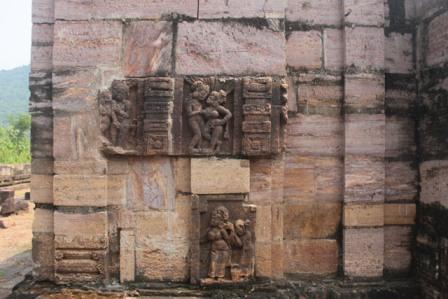BHUBANESWAR: The devastation caused by cyclonic storm ‘Fani’ has left a void in the green cover of the state. Barbara Forest, a little-known place near Chilika Lake, however, seems to have withered the storm.
The place is named after a British woman, Barbara who had been killed by a tiger in the late 19th century while she was with her husband in a hunting expedition. The forest is not very old. Historically, this region was under the rule of Raiyat Zamindari System of Banapur. Till 1870, there was no restriction for cutting trees in today’s Barbara Forest.
The locals had almost cleared the forest to support their agriculture. In 1871, restrictions were made to felling trees and practice of seasonal agriculture for the first time. In 1880, it was declared as protected forest and in 1883 it was taken over by the Forest Department, Bengal.
Interacting with Orissa Post, historian Jitu Mishra said, “Mystic ruins enrich the fringes of Barbara Forest. Bankadagada, the remains of a fortress butting out of a hill, and a Shiva Temple built in Pre-Kalinga style of architecture are the major archaeological heritages of the area, that any serious traveller to Barbara cannot miss. The area was the capital of Sailodvaba in the 7th century CE. Sailodvabas ware the first to introduce temple building activity in Odisha.”
The ruined Shiva Temple is one of the earliest having beautiful carvings of amorous couples and Tantric deities on its walls. There are also loose sculptures carved in the formative styles sheltered within the complex. Some of these sculptures strongly resemble with sculptures of Java and Sumatra (Indonesian Archipelago). One may wonder – around this time of history, the nearby Chilika was a major hub for maritime trade. Ships would sail from ports of Chilika to Southeast Asia for trade and business using wind power.”
According to A.L. McIntire, Conservator of Forests, Bengal, 1908, “In 1883, the forests were placed under the management of the forest department, a forest settlement being carried out at about the same time. Under the latter a total area of 110 square miles of forest was declared reserved forest, free of rights, and the rest of the forest and waste, was declared to be protected forest, in which revenue paying Raiyats were allowed to exercise a number of privileges, such as gazing their cattle and cutting bamboos and trees.”
Thanks to the British Forest Management, even today, the slopes in the hills still hold the natural evergreen-deciduous forest, where teak is the prominent trees. Some of these trees are more than 80 feet high and 10 feet wide in circumference.
To oversee the forest management, the British also had built a teakwood panelled forest bungalow in 1912. Today it is a major attraction in the forest. Giant squirrels are found in great numbers in the teak forest of Barbara. While on a trek, one can find them in their acrobatic best jumping from one branch to another. But I was unfortunate. The forest is also a heaven for bird watchers. Woodpeckers, bulbul, bets, oriole, jungle fowls, baya weaver bird, parakeets are found in abundance in Barbara Forest.
Chaitali Shome, OP
